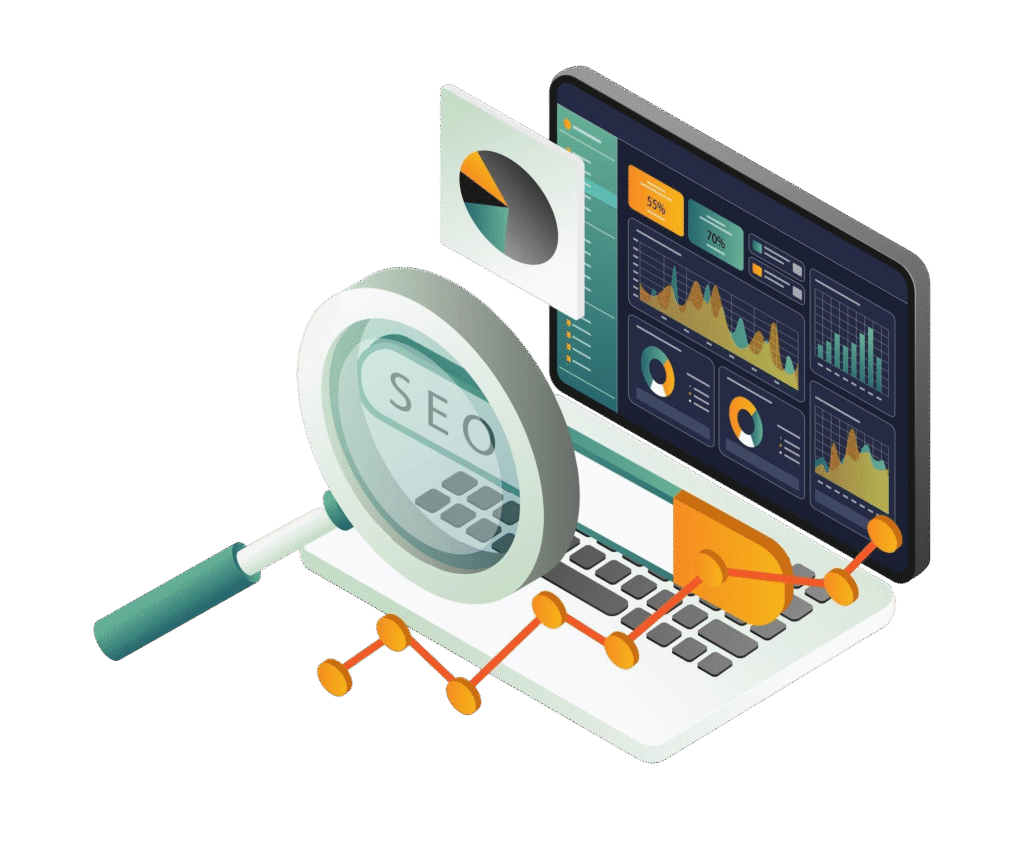Data Centric Approach: In today’s competitive digital landscape, businesses cannot afford to rely on guesswork when it comes to media planning and budgeting. The old way of allocating ad spend based on intuition or outdated benchmarks often results in wasted resources and missed opportunities. A data-centric approach ensures that every rupee or dollar spent delivers measurable results. Whether you are a digital marketing agency, a website development company, or even a small business owner, integrating data into your strategy is the key to maximizing return on investment (ROI).

Why Guesswork Doesn’t Work Anymore
The digital era has changed consumer behavior. Customers research, compare, and analyze before making purchasing decisions. With platforms like Google, Instagram, and Facebook providing in-depth analytics, brands have no excuse to rely on assumptions. Guesswork in media planning often leads to:
- Overspending on underperforming channels.
- Neglecting high-ROI opportunities.
- Inconsistent brand visibility.
- Inability to scale campaigns effectively.
For example, many brands assume Facebook Ads work better than Google Ads without analyzing audience behavior, cost-per-lead (CPL), or customer acquisition cost (CAC). This is where a best performance marketing agency in India leverages data-driven insights to optimize every campaign.
What is a Data-Centric Approach?
A data-centric approach to media planning and budgeting means making every decision backed by metrics, not assumptions. It involves gathering, analyzing, and applying real-time insights to optimize campaigns. Instead of “spending because it feels right,” companies invest based on actual evidence of what drives conversions, clicks, and customer engagement.
Core Principles of Data-Centric Media Planning:
- Audience Insights – Use tools like Google Analytics, Facebook Audience Insights, and CRM data to understand demographics, interests, and behaviors.
- Channel Performance – Analyze past performance across social media, search engines, display ads, and email to identify the most profitable platforms.
- ROI-Focused Budgeting – Allocate funds where data shows the highest return instead of splitting budgets evenly or randomly.
- Continuous Testing – A/B test ad creatives, landing pages, and CTAs to refine performance.
- Real-Time Adjustments – Monitor campaigns live and reallocate budgets quickly when trends shift.
Benefits of Data-Centric Media Planning
- Improved Efficiency – No more wasted spend on irrelevant audiences or low-performing platforms.
- Higher ROI – Every penny is optimized toward results, whether that means leads, sales, or traffic.
- Scalability – Brands can confidently scale campaigns once data proves what works.
- Customer-Centric Marketing – Data ensures messaging resonates with real audience needs.
- Competitive Advantage – Companies using data outperform those relying on instinct.
Role of Agencies in Data-Driven Budgeting
Many businesses lack the expertise to interpret data correctly. This is where a digital marketing agency comes into play. The best digital marketing agency Hyderabad or the best SEO agency in India doesn’t just run ads—it studies analytics, forecasts trends, and builds predictive models. With advanced tools like Google Data Studio, SEMrush, and HubSpot, agencies craft strategies that minimize guesswork and maximize results.
For eCommerce, working with the Best Shopify Development Company in India ensures not only smooth website performance but also integrated analytics to track customer journeys. Similarly, SEO-focused businesses can benefit from a website development company that integrates keyword research, technical SEO, and conversion tracking into their websites.
Real-World Application: How Data Shapes Budgeting
Imagine a fashion brand spending ₹5 lakh monthly on ads. Traditionally, it might split funds 50% on Facebook, 30% on Google, and 20% on Instagram. However, a data-centric approach would look like this:
- Analyze past campaigns: Google Ads deliver higher-quality leads at ₹250 per lead vs. Facebook’s ₹400.
- Monitor website analytics: Instagram drives traffic, but with a higher bounce rate.
- Track sales attribution: 60% of conversions come from retargeting campaigns.
With this insight, the revised budget may allocate 40% to Google Ads, 35% to retargeting, and 25% to Facebook/Instagram combined. The result? Lower cost per acquisition (CPA) and higher revenue without increasing overall spend.
The Future of Media Planning is Predictive
As AI and machine learning advance, data-centric media planning is becoming predictive. Instead of only analyzing past results, tools can now forecast future outcomes. Imagine knowing exactly how much ROI a campaign will deliver before even launching it. This is the level of precision the best performance marketing agency in India is already moving toward.
Predictive analytics helps:
- Forecast seasonal demand.
- Identify high-value customer segments.
- Automate budget allocation across platforms.
- Personalize campaigns for maximum impact.
Conclusion
Guesswork is a costly habit in digital marketing. Businesses that continue to rely on intuition will find themselves outperformed by competitors who embrace data. A data-centric approach to media planning and budgeting ensures resources are spent strategically, performance is measurable, and campaigns deliver predictable results.
Whether you’re hiring the best digital marketing agency Hyderabad, partnering with the best SEO agency in India, or scaling your eCommerce with the Best Shopify Development Company in India, data should drive every decision. Ditch the guesswork—because in today’s market, numbers don’t just tell the story, they write the future of your business success.
digital marketing agency, best digital marketing agency hyderabad, best performance marketing agency in india, website development company, Best SEO agency in india, Best Shopify development company In India


